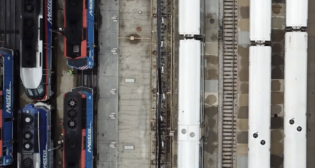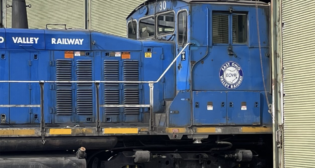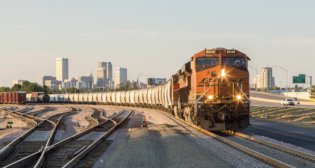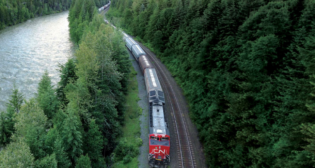
Carloads down, intermodal up, yet again: AAR
Written by Douglas John BowenU.S. freight carload volume for the week ending April 28, 2012 fell 4.1% measured against the comparable week a year ago, continuing an ongoing trend for the year, the Association of American Railroads said Thursday. U.S. intermodal volume, however, continued its own yearly trend during the week, up 5.5% compared with the same week in 2011.
AAR said 11 of the 20 carload commodity groups posted increases compared with the same week in 2011, led by petroleum products, up 51.9%, motor vehicles and equipment, up 29.1%, and crushed stone, sand, and gravel, up 24.2%. Declining commodity groups included grain, down 18%, coal, down 16.2%, and waste and nonferrous scrap, down 10.5%.
Canadian freight carload continued its own upward advance for the year, up 1.6% for the week ending April 28 compared with one year ago. Canadian intermodal did better, up 9.6%. Mexican freight carload volume also edged ahead, up 0.9%, compared with one year ago, and Mexican intermodal soared, up 31.5%.
Combined North American freight carload volume for the first 17 weeks of 2012 on 13 reporting U.S., Canadian, and Mexican railroads was down 1.7% measured against the comparable 2011 period, while combined North American intermodal was up 4.2%.
Tallying April results, AAR said U.S. freight carload volume for the month was down 5.5% compared with April 2011; U.S. intermodal was up 3.6% for the month compared with a year ago. Commodities with carload declines in April were led by coal, down 16.6% compared with April 2011; AAR noted this was coal’s biggest year-over-year percentage decline in rail traffic on record.
“In 2011, U.S. freight railroads reinvested more than ever before in the national rail network, because they know America’s manufacturers, farmers, and resource producers need to move freight safely and cost effectively to continue to grow in the years ahead,” said AAR Senior Vice President John T. Gray. “Month-to-month trends may vary, but the long-term demand for rail service will certainly rise.”



